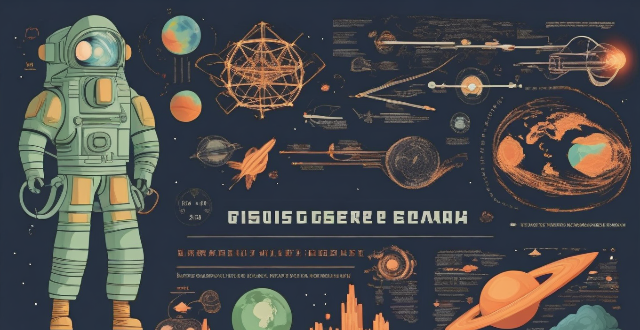The text discusses the current advancements in interstellar exploration technology. The main topics include the Breakthrough Starshot project, which aims to propel tiny spacecraft to Alpha Centauri using powerful lasers on Earth; warp drive technology that could allow faster-than-light travel by manipulating space-time; ion propulsion systems already used in deep space missions and capable of long-duration missions; and nuclear propulsion systems potentially offering higher speeds than chemical propulsion systems but with safety concerns. These technologies offer hope for humanity's future as an interstellar species.

Current Advancements in Interstellar Exploration Technology
Interstellar exploration technology has come a long way in recent years. Here are some of the current advancements:
Breakthrough Starshot Project
The Breakthrough Starshot project is an ambitious plan to send a fleet of tiny spacecraft to our nearest neighboring star system, Alpha Centauri, which is 4.37 light-years away from Earth. The spacecraft will be propelled by powerful lasers on Earth, reaching speeds of up to 20% of the speed of light. This would allow them to reach Alpha Centauri in just 20 years, instead of the tens of thousands of years it would take with conventional propulsion methods.
Key Features:
- Microspacecraft: Each spacecraft will be about the size of a postage stamp and weigh no more than a few grams.
- Laser Propulsion: The spacecraft will be propelled by powerful lasers on Earth, which will accelerate them to high speeds.
- Lightsails: The spacecraft will use lightsails made of reflective material to catch the laser beams and convert them into forward motion.
Warp Drive Technology
Warp drive technology is another area of research that could revolutionize interstellar travel. The idea is to create a "bubble" of space-time around a spacecraft that moves faster than the speed of light, without actually breaking the cosmic speed limit. This would allow the spacecraft to reach distant stars in a fraction of the time it would take with conventional propulsion methods.
Key Features:
- Space-Time Manipulation: The warp drive would manipulate space-time itself, creating a bubble of altered space-time around the spacecraft.
- Faster-Than-Light Travel: The spacecraft would travel faster than the speed of light within this bubble, without violating Einstein's theory of relativity.
- Energy Source: A major challenge for warp drive technology is finding an energy source capable of generating enough power to create and maintain the warp bubble.
Ion Propulsion Systems
Ion propulsion systems are already being used in deep space missions, such as NASA's Dawn mission to the dwarf planet Ceres. These systems use electrically charged particles (ions) to generate thrust, allowing spacecraft to travel much farther and faster than traditional chemical propulsion systems.
Key Features:
- Electric Propulsion: Ion propulsion systems use electricity to accelerate ions, creating thrust without the need for fuel.
- High Efficiency: Ion propulsion systems are much more efficient than traditional chemical propulsion systems, allowing spacecraft to travel farther and faster with less fuel.
- Long-Duration Missions: Ion propulsion systems are well-suited for long-duration missions, such as those required for interstellar travel.
Nuclear Propulsion Systems
Nuclear propulsion systems are another potential technology for interstellar exploration. These systems would use nuclear reactions to generate power and propel spacecraft through space at high speeds.
Key Features:
- Nuclear Fusion: Nuclear fusion reactions could provide a powerful and efficient source of energy for interstellar spacecraft.
- High Speeds: Nuclear propulsion systems could potentially achieve much higher speeds than conventional chemical propulsion systems, reducing travel times between stars.
- Safety Concerns: One of the main challenges for nuclear propulsion systems is ensuring their safety during launch and operation.
In conclusion, there are several promising technologies currently under development that could revolutionize interstellar exploration in the coming decades. From laser propulsion to warp drives and beyond, these advancements offer hope for humanity's future as an interstellar species.